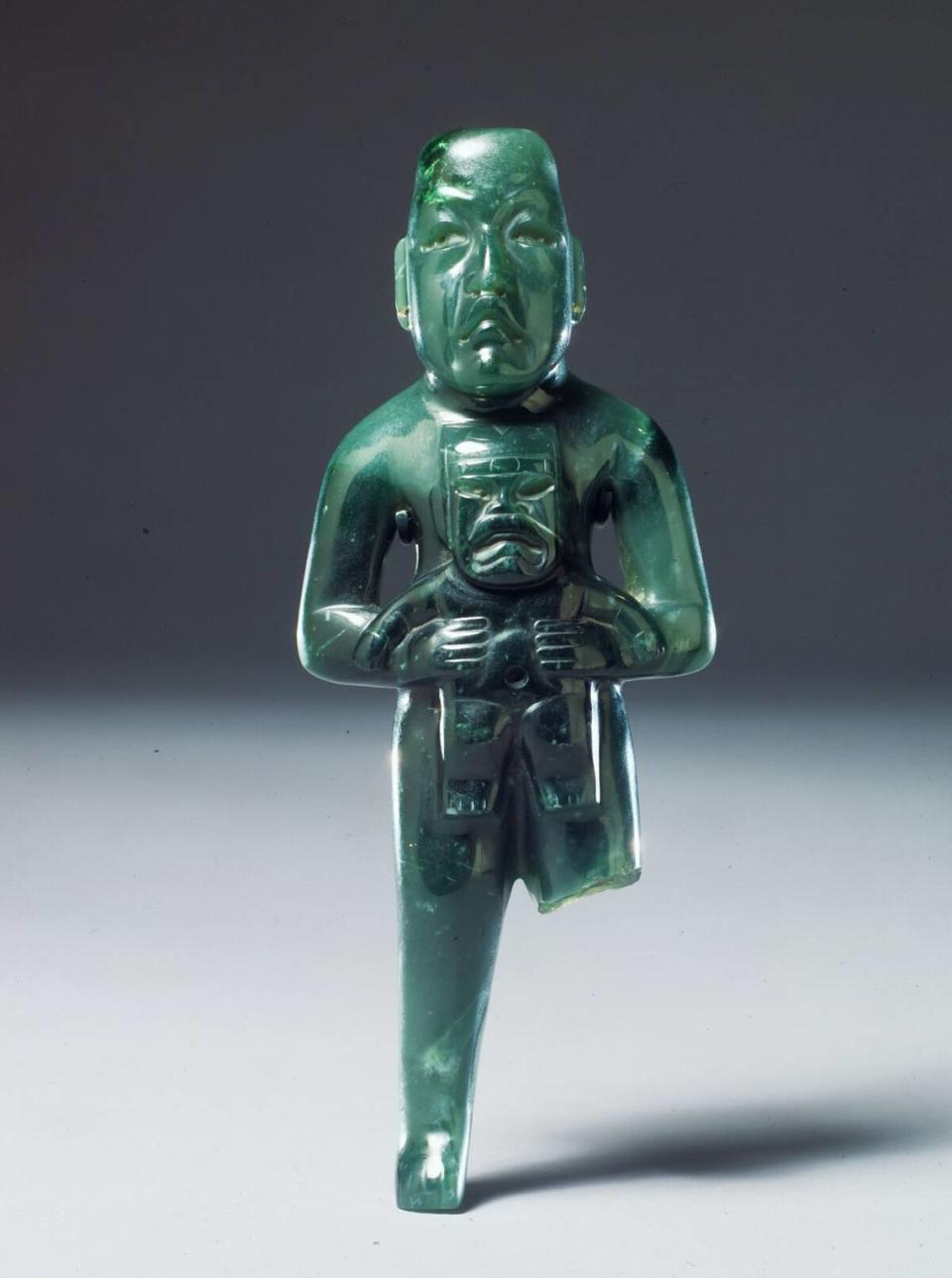Fort Worth’s Kimbell Art Museum acquires Olmec statuette described as a ‘masterpiece’
The Kimbell Art Museum announced Wednesday that it has acquired a statuette carved in jade from ancient Mesoamerica.
“Standing Figure Holding a Were-Jaguar Baby,” circa 900– 00 B.C., was acquired in celebration of the 10th anniversary of the Kimbell’s Renzo Piano Pavilion, where it will be the displayed beginning Friday, Dec. 15.
“Few Olmec objects have the history, aesthetic quality, and iconographic significance of this superb jade figure,” said Jennifer Casler Price, the Kimbell’s senior curator of Asian, African, and ancient American art. “I am absolutely thrilled that we are able to add this incredibly eloquent sculpture to the ancient American collection.”

Olmec statues profoundly influenced the art and culture of later Mesoamerican cultures, such as the Maya and the Aztecs. The Olmec were also regarded for carving sculptures from hard stone and other precious materials.
So Casler Price’s excitement about the 8.5-inch ancient figure is not overblown. It has a prominent place in history, is the source of scholarly debate and has been studied for almost a century.
It is one of only 11 known to exist. Rich with symbolism, the figure is a naked Olmec ruler holding an infant were-jaguar, or a supernatural creature that is part human and part jaguar. This quasi human-animal has distinct features, notably a V-shaped cleft, large, slanted, almond-shaped eyes, a broad nose with flared nostrils and a gaping mouth revealing a fangless gum line.
The were-jaguar is linked to the supernatural through a decked out headband. Connecting to the supernatural is key. The more a leader was seen as akin to a god, the happier the leader.
Likewise, jade was the go-to material if you wanted someone to feel powerful. Its rich green color was closely associated with maize and ideas of sustenance, fertility, preciousness and enduring life.
In short, these things inflated their egos.
Scholars are excited about it for another reason. It is one of only three that portray the human figure standing and holding the infant vertically across the chest, rather than seated and interacting with the infant in its lap. Only one other known sculpture shows the infant wearing the headband explicitly linking it to the Olmec supernatural.
For art world types, it has similar significance too.
The sculpture has been frequently published and exhibited since it was acquired in 1947 by Alastair B. Martin of New York City, who placed the figure on long-term loan to the Brooklyn Museum of Art, where it remained until 2014. Most recently, the sculpture has been displayed at the Cleveland Museum of Art.
“Thanks to the foresight and generosity of collector Alastair Martin, this astonishingly beautiful masterpiece of Olmec jade carving has been on display for the public for more than 75 years, studied by scholars and appreciated by general museum visitors,” said Eric Lee, director of the Kimbell. “I am incredibly pleased to have the opportunity to continue that tradition. By acquiring one of the most important cultural touchstones of Olmec art for the Kimbell, we can assure that it will forever remain on view, available to all who want to appreciate its beauty and cultural significance.”

